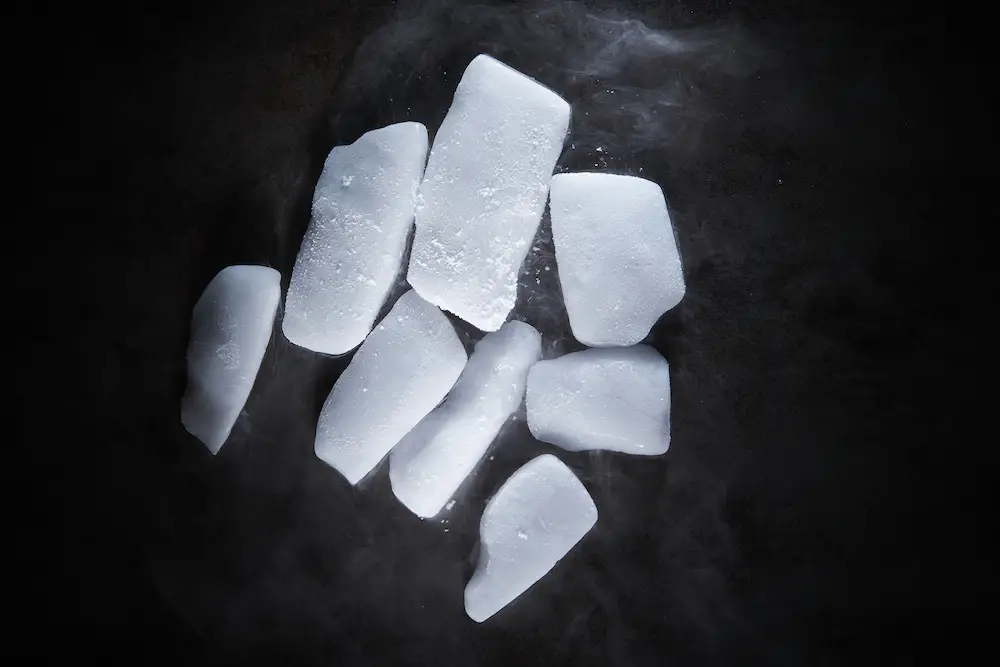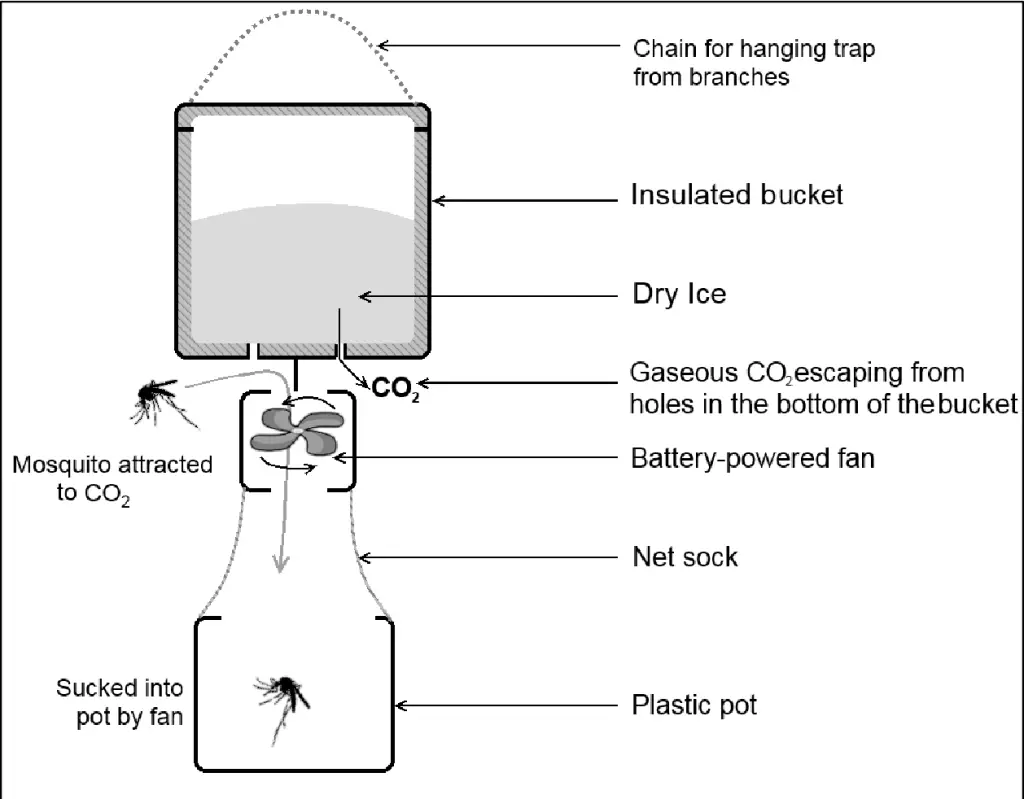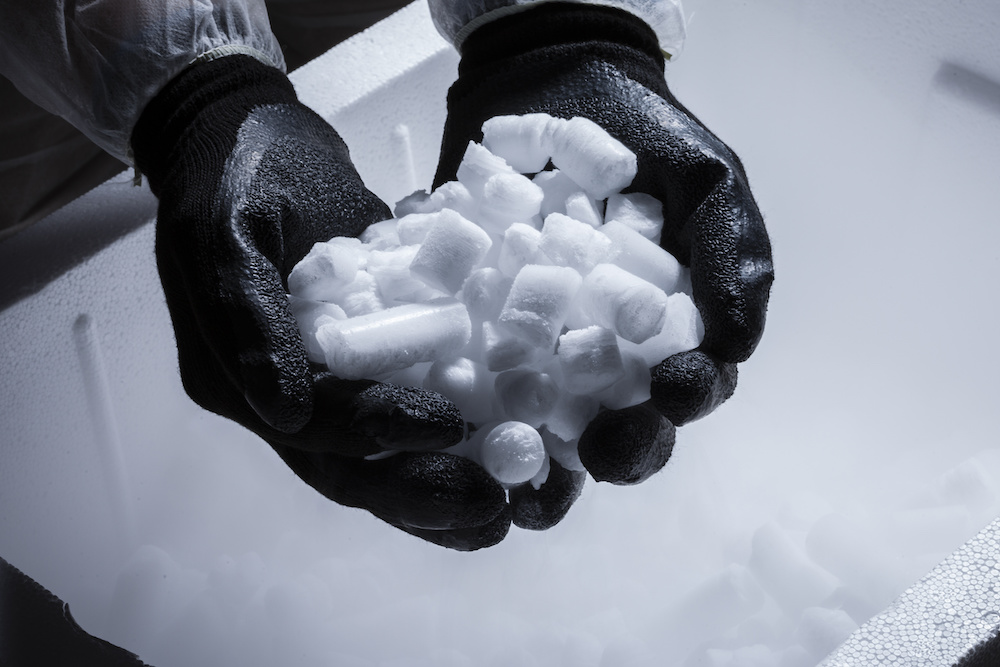If you are trying to find out how to dispose of dry ice, you must already know what it is, what it’s for, and how to handle it correctly.
You must have enjoyed using it for some smoke effects or just finished managing a party that needed plenty of ice-cold beverages.
It could be your first time using dry ice, and you now fathom all of its convenience and benefits.
Now that you’re done with it, you just realized that it takes too long to melt, and you missed out on reading about how to dispose of dry ice safely and responsibly.
Got other items to dispose of? We can show you how to dispose of Bacon Fat or Old Paint, and we even have ways to reuse them!
How Long Does It Take for Dry Ice to Melt?
Technically speaking, dry ice does not melt. Melting refers to a spontaneous transformation from solid matter into liquid form.
Dry ice is the solid form of carbon dioxide, and it does not change into a liquid at normal atmospheric pressure.
Instead, it transforms directly from a solid phase to gas-like vapor in a process called sublimation.
Sublimation is the opposite of deposition, the process by which carbon dioxide gas solidifies and freezes into dry ice.
The switch between solid and gaseous carbon dioxide skips the wet, liquid phase, which is how dry ice got its name.
So, how do you dispose of dry ice? You do not wait for it to melt. Instead, you leave it to sublimate.
As a general rule, dry ice sublimates at an average rate of two percent per hour inside insulated containers.
Larger blocks weighing 20 or more pounds typically lose around five to ten pounds every 24 hours while insulated in storage.
Many factors affect the rate of sublimation, and there is no easy way to quantify dry ice sublimation rates.
These factors include size, shape, and ambient temperature, among others.
Dry ice pellets weighing two pounds will sublimate faster than a dry ice brick of the same weight if left together under the same conditions.
A two-pound brick of dry ice left out to sublimate under the sun at 30 degrees centigrade will last about 15 minutes.
In short, tinier, broken-down dry ice pieces will sublimate faster than a single, solid block of the same mass.
Can I Dump Dry Ice Outside?
It depends on where the “outside” is. While outdoor disposal in a well-ventilated area is the best choice for disposing of solid carbon dioxide, it should be clear to anyone that some factors still need consideration.
The following contraindications explain how “disposing of dry ice outside” shouldn’t be taken lightly.
Public and Animal-Accessible Spaces
It is not advisable to dispose of dry ice in areas accessible to other people, pets, and other animals. Consider any of these possible causes:
- Frostbite
Dumping dry ice in public spaces may cause frostbite accidents to both humans and animals.
Frostbite is a physical injury that comes as a result of freezing skin and underlying tissues.
- Hypercapnia and Asphyxiation
As the dry ice sublimates into its gaseous form, the immediate environment may collect an influx of carbon dioxide gas, resulting in an oxygen-scarce atmosphere.
People who inhale too much carbon dioxide could end up experiencing hypercapnia or asphyxiation.
Hypercapnia is a health condition caused by having too much carbon dioxide in the bloodstream.
Symptoms of hypercapnia include dizziness, drowsiness, fatigue, headaches, confusion, and shortness of breath.
To prevent these things from happening, only dump dry ice in a well-ventilated area inaccessible to anyone who doesn’t know how to work around the substance.
Outdoor Garbage Disposal Bins
It is also very wrong to throw dry ice away into a public dumpster, garbage chute, or any enclosed garbage storage space.
When left inside an enclosed container, dry ice sublimates into pressure-building gas that can cause explosions.
Putting dry ice into any closed glass, plastic, or metal container is exceedingly dangerous and will likely cause severe injuries or even death.

How to Dispose of Dry Ice
To dispose of dry ice safely and responsibly, consider the following steps.
- #1: Choose a well-ventilated and protected private outdoor space for disposing of dry ice. And inform everyone with access about it.
- #2: Wear insulated gloves like the ones you would wear on a cold winter day.
- #3: Handle the dry ice as little as you can. Use some tongs and an open-top container to transport it from one area to another.
- #4: Let the dry ice sit in the area until it sublimates completely.
What Is the Fastest Way to Dispose of Dry Ice?
Dry ice starts to transform into a gas at -78.5 degrees centigrade. Which means it continuously sublimates even in existing insulated storage technology.
Any insulated packaging only minimizes the sublimation rate.
You can apply the following conditions to speed up dry ice sublimation:
- Take It Out of Insulation
As discussed, any form of insulation reduces the sublimation rate of dry ice.
Take it out of its storage box. Let it bask in warm outdoor conditions, where its transformation can gradually mix up with the atmosphere.
- Decrease Substance Size
If you have a block of dry ice, break it down into smaller pieces.
Breaking it down increases the surface area of contact with the atmosphere. This gives all facets of the broken pieces access to the open air.
A greater surface area of contact equates to a faster sublimation rate.
- Increase Ambient Airflow
A well-ventilated area is essential for dry ice disposal because it replaces the air surrounding the dry ice, preventing carbon dioxide gas accumulation.
Replaced air takes away the colder, subzero temperatures discharged by the dry ice, thereby contributing to the sublimation process.
- Increase Ambient Temperature
While taking dry ice out of insulation and into the open exposes it to warmer temperatures, using heat-reflective open-top containers can also increase ambient temperature.
When leaving dry ice out to sublimate, put it on a tray lined with some aluminum foil or put it on top of a stainless steel table under the sun.
The highly-reflective metallic surfaces amplify the ambient heat surrounding the dry ice.
- Increase Density of Heat Transfer Medium
Water is denser than air, and denser molecules have better chances of transferring heat from one molecule to another.
Putting dry ice in water increases its sublimation rate. That is why dry ice produces smoke when it gets in contact with water.
However, water freezes slowly around dry ice because it has a temperature that is way below the water freezing point.
To counter this, you can put dry ice into continuously boiling water.
As water evaporates and dry ice sublimates, they both decrease in volume, making water addition a constant task until all the dry ice is gone.
Since this is the fastest way of disposing of dry ice, it will also produce higher carbon dioxide gas quantities in a short amount of time.
To prevent health hazards, get back to the basics and focus on ventilation and smaller-sized dry ice portions.
Adding a fan or two and putting in smaller dry ice pellets into a large pot of boiling water one by one should do the trick.
What Can You Do With Extra Dry Ice?
After using dry ice for commercial, industrial, or general cooling applications, you might want to look for a good use for it rather than having it thrown away.
While considering how to get rid of dry ice, you may opt to look for another application in the meantime.
There are some helpful things to do with any extra dry ice, as long as you always consider safety.
Food Preparation and Preservation
You can use extra dry ice to make chilled desserts. While some cakes and ice cream require many hours to harden in the freezer, using dry ice to flash-freeze your mixed or baked ingredients can do it faster.
You can also use dry ice to make quick chilled drinks. Use a hammer, an icepick, and some goggles with your insulated gloves to make some dry ice cubes.
With a few ingredients at home, whip up a batch of chillers with smoke or fog effects, and serve them up to your family and friends.
Don’t forget to remind them to wait for the smoking to stop before drinking their chillers.
Finally, you can also use dry ice to flash-freeze fruits and vegetables for long-term storage.
Mosquito Diversion and Trap
How do you dispose of dry ice? Let mosquitoes take a whiff.

Naturally exhaled carbon dioxide gas from humans and animals attracts many insects, including mosquitoes.
Use leftover dry ice to divert mosquitoes from getting your blood by hanging a piece in a cloth bag next to a mosquito lamp.
Or make a setup like the above.
Conclusion
Learning how to dispose of dry ice is essential if you handle it often, but it won’t be necessary if you purchase the right amount at the right time.
It may take some getting used to at first, but you’ll understand the basics the more times you use it.
If you don’t have an open space for disposing of dry ice, getting the right amount is even more critical.
Still, if you plan to do it indoors, open all of your windows and re-circulate air with fans.
Additionally, even the best air purifiers won’t get rid of all carbon dioxide gas, but they can help with indoor air recirculation.

